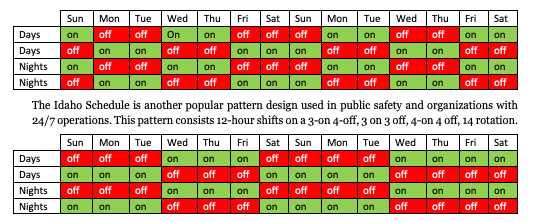A Brief History of Scheduling
By Darren Scott, Scheduling Coordinator
The concept of “scheduling” is not new; the pyramids are over 3000 years old, Sun Tzu wrote of scheduling strategies 2500 years ago, transcontinental railways have been built for 200 years, etc. None of these activities could have been accomplished without a form of scheduling.
Shift work has existed from ancient times, based on the need for watchmen of kingdoms and military. Our modern-day shiftwork traces back to the late 1800s. With the invention of the lightbulb and the increased costs of assets and start-up times, industries like steel mills, iron foundries, and textile mills were urged to run production 24/7.
At first, the schedule patterns split the workforce into a day and night crew that typically rotated. The first crew would work for 13 straight days on 12-hour shifts, followed by a continuous 24-hour shift. This exhausting day was immediately followed by 13 straight night shifts, with one day off at the end before starting this work pattern again.
This schedule resulted in high rates of accidents and injuries. With few regulations, employers had little incentive to consider a more humane design when running a 24/7 operation. Thankfully, this practice ended with the development of new and better-balanced schedule patterns designed to decrease workplace injuries. Two of these patterns have dominated all 24/7 industries.
The most popular used pattern is called the DuPont Rotation or Pitman Schedule. This pattern’s biggest advantage is “every other weekend off”, by setting up 12-hour shifts on a 2-on 3-off, 2-on 2-off, 3-on 2 off, 14-day rotation. An organization using this pattern will require four crews, consisting of two day crews and two night crews. The favourability of weekends off makes this pattern highly desirable by both workers and employers.

Scheduling has come a long way and is now automated through software. There are many patterns and algorithms available to balance the needs of the workers and employers.
